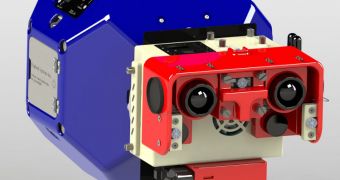Investigators at the Massachusetts Institute of Technology (MIT) and the University of Maryland announce the completion of two new, major hardware upgrades for their Synchronized Position Hold, Engage, Reorient Experimental Satellites (SPHERES) robots.
Designed as intelligent, autonomous assistants for astronauts in space, these volley ball-sized machines are capable of orienting themselves in space and figuring out where the other members of the swarm are. In the future, they will be used to perform repairs and upgrades on spacecraft.
However, swarms of orbital repair robots are still a few years away. Until then, researchers need to ensure that their machines are safe enough to operate around humans, especially given the particularities of working in microgravity.
The first generation of SPHERE is already aboard the International Space Station (ISS), and has long since completed validation tests. In addition to hovering about, the small robotic spheres also help scientists test a variety of new control algorithms.
MIT Space Systems Laboratory (SSL) are now moving ahead with the project, through a two-camera setup named VERTIGO and a series of electromagnetic rings called, well, RINGS. Both are hardware upgrades that need to be attached to the original SPHERES.
The process is scheduled to occur in a few months, when the two pieces of hardware will be delivered to the station. VERTIGO is required so that the MIT/UM investigator can refine the algorithms they want to use for vision-based navigation. Obtaining this capability is essential for autonomous flight.
On the other hand, the purpose of RINGS is to attract or repel other SPHERES. This upgrade consists of several large electromagnetic rings, which encircle each robot. They exert an attracting or repelling force depending on the amount of current passing through them.
Scientists hope to use the second upgrade to enable SPHERE to fly in very precise, tightly-controlled formations. This could come in handy if the machines are to operate outside the ISS, for example.
“You can keep all the power systems sitting on the space station, with a big coil. The inspector satellite could have a little coil on it with the cameras, and it can fly around, powered from the space station so it doesn’t have to carry its own power supply,” explains researcher David Miller.
“So it can map things, inspect and come back and dock with the space station,” adds the expert, who holds an appointment as the director of the SSL, and as a professor of aeronautics and astronautics at MIT.

 14 DAY TRIAL //
14 DAY TRIAL //